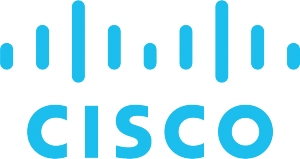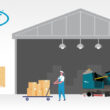The Hybrid Work Environment of the Future: Where to Start
As governments rapidly transitioned to a remote work environment over the last year, there was one big question: would productivity take a hit? That question was answered loud and clear as productivity stayed strong and, in many cases, increased. This success has left us with some clear guidance that can help government take the next step in that transition—enabling the hybrid work environment of the future.
A Cisco executive perspective from Marcus Moffett
As governments rapidly transitioned to a remote work environment over the last year, there was one big question: would productivity take a hit? That question was answered loud and clear as productivity stayed strong and, in many cases, increased. This success has left us with some clear guidance that can help government take the next step in that transition—enabling the hybrid work environment of the future.
As public sector workers begin returning to the traditional workplace, there are three enablers emerging that can help government’s transition to a hybrid work environment in the year ahead:
- Accept that the mobile workforce in government is here to stay
- Leverage the ability to build to scale
- Understand that security is imperative to making it all work.
Hybrid work environments and the mobile workforce
During a Government Technology webinar, sponsored by Cisco, speakers addressed this shift in how government works. According to Marcus Moffett, Cisco’s CTO for the U.S. Public Sector, “at the end of the day, it’s about getting it right with your people first, having the right processes in place, and having a strategy that lets you move quickly when you have to transform.”
Scalability in hybrid work environments
For government to serve effectively, it will be important to keep systems flexible and scalable. Planning for future growth should be a part of this effort. For example, upgrading not just videoconferencing capabilities, but also embedding a broader suite of messaging and sharing capabilities that allow workers to collaborate from anywhere. And ensuring these tools remain resilient. This also means a continued focus on IT modernization for the platforms and infrastructure supporting these solutions, as well as exploring cloud platforms, software-as-a-service, artificial intelligence, and machine learning.
Security is critical
For government, hybrid workplaces will also depend upon a “defense in depth” approach to security. One that is holistic yet operates across a variety of platforms proactively, providing deeper visibility into user behaviors. The State of Texas Department of Transportation (TxDOT) learned that lesson when it was hit with a ransomware attack last year. But that attack also turned into an opportunity to educate and change user behaviors to drive greater security.
The future of hybrid work environments
Over the last year, governments have come to see IT as a critical infrastructure, just like utilities and roadways. And it has been shown that technology can help government become more flexible and resilient. As a result, IT is becoming a strategic imperative for government at all levels—one that is truly transformative.
Brought to you by:






















